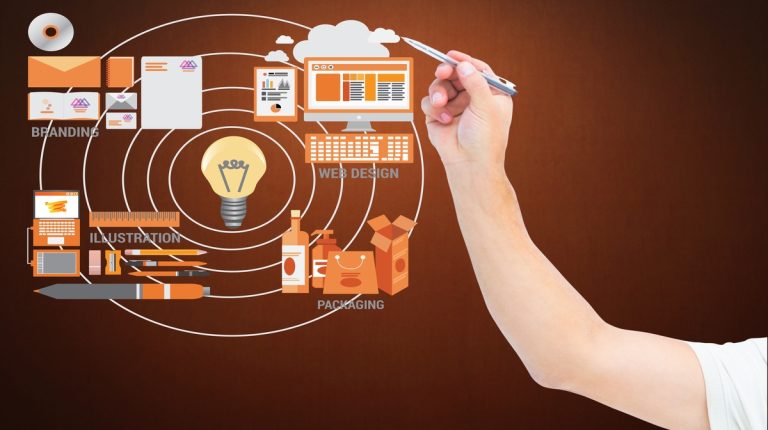
A design system is the structured collection of reusable components, patterns, design tokens, and guidelines that define how a digital product looks, feels, and behaves. It operates as a unified framework that helps teams build software with clarity, speed, and accuracy. In a world where users interact with brands across websites, apps, dashboards, and internal tools, having a structured system is no longer optional. It is essential for delivering seamless, predictable experiences.
Consistency plays an important role in how users trust, navigate, and remember a product. Even small inconsistencies can create confusion, friction, and frustration. With proper design system creation, businesses ensure that every interface, microinteraction, and visual element stays aligned with the brand’s identity. This strengthens brand consistency and creates a cohesive user experience across touchpoints.
A strong design system also supports user experience at a deeper level. By standardizing design decisions, it reduces cognitive load, speeds up task completion, and improves accessibility. For organizations that rely on product differentiation, a mature system becomes the backbone of scalable and intuitive digital experiences.
A design system is more than a style guide or a pattern library. It is a living product that evolves with the organization’s needs. To function effectively, it includes a set of critical components that guide both design and development teams.
Together, these elements create a single source of truth that allows teams to work with clarity and confidence. When integrated with engineering workflows, design systems also support application performance optimization by reducing redundant code, improving rendering efficiency, and enabling shared component libraries.
A comprehensive design system acts as the bridge between creativity and execution. It ensures that every member of the team, whether designers, developers, or product leads, works in sync.
Visual consistency is the foundation of effective digital experiences. When users switch between mobile apps, dashboards, and websites, they expect the same look and feel. Consistent icons, colors, typography, and spacing create familiarity and strengthen brand consistency.
Predictable UI interactions reduce user learning curves. When dropdowns, buttons, and form behaviors remain the same across the product, users perform tasks faster and with fewer errors. This is vital for enterprise platforms and SaaS products where repetitive tasks drive productivity.
Design system creation helps teams follow standardized workflows. Designers no longer reinvent UI patterns and developers avoid writing repetitive code. Product managers gain clarity on capabilities and limitations. This alignment results in faster decision-making and a smoother development lifecycle.
Modern organizations rely on digital-first strategies to improve customer journeys and internal operations. A unified design system becomes a critical enabler of these efforts. It reduces fragmentation, increases collaboration, and allows teams to scale faster across markets and product lines. As modernization accelerates, the system ensures that design standards remain intact even as new technologies or platforms are introduced.
Reusable components significantly reduce design and development cycles. Teams spend less time creating UI elements from scratch and more time focusing on innovation. With the help of experience design services and UX prototyping services, businesses can map ideas into functioning prototypes faster while maintaining high consistency.
Inconsistent design decisions often accumulate into technical debt. Outdated UI patterns, duplicate code, and mismatched styles create inefficiencies that slow down releases. A design system prevents this by enforcing clear rules and reusable assets. It also reduces future maintenance costs by eliminating redundant or outdated components.
As products expand into new platforms such as wearable devices, kiosks, smart screens, or web apps, a centralized design system enables smooth scalability. The concept of design scalability ensures that each new feature or platform inherits the same design logic, keeping the overall experience cohesive.
A shared design language improves communication and transparency. Designers focus on creativity, developers on faster execution, and product managers on strategy. This harmonized workflow leads to fewer revisions, clearer handoffs, and improved product velocity.
Start by evaluating your current product’s UI elements, user flows, and interaction patterns. Identify inconsistencies in typography, spacing, components, and user behavior. Understanding existing gaps helps guide the future foundation of your design system.
Create the blueprint for your design system. Define the brand principles, tone, accessibility guidelines, and the overarching design philosophy. This ensures every future component aligns with the vision of the organization.
Build a scalable library that includes:
This phase often benefits from UX prototyping services, allowing teams to test designs before full implementation.
Define rules for contribution, review, and updates. Clear governance ensures that only approved patterns enter the system. Comprehensive documentation guarantees consistency even as new team members join.
Ensure that the design system is integrated with tools like Figma, Storybook, Git repositories, and CI pipelines. Seamless integration improves adoption and reduces friction during implementation.
A design system is a living asset. Regularly monitor usage, gather feedback, and iterate components. As your product evolves, your system must grow to support new features, platforms, or business needs.
Design systems have become central to building consistent, high-performing digital products. They eliminate guesswork, streamline workflows, and unify the brand across every digital interaction. With thoughtful design system creation, companies gain the ability to scale efficiently, improve user experience, and accelerate product innovation.
Organizations that invest early in structured systems build stronger digital foundations that support long-term success. As customer expectations rise and competitive pressures increase, the brands that prioritize consistency, clarity, and scalability will stand out.
At Coditi Labs, we help businesses implement scalable and future-ready design systems that strengthen brand identity and enhance user experience across every product touchpoint. The future of digital product excellence belongs to teams that treat their design system as a strategic asset, and Coditi Labs empowers organizations to achieve exactly that.









